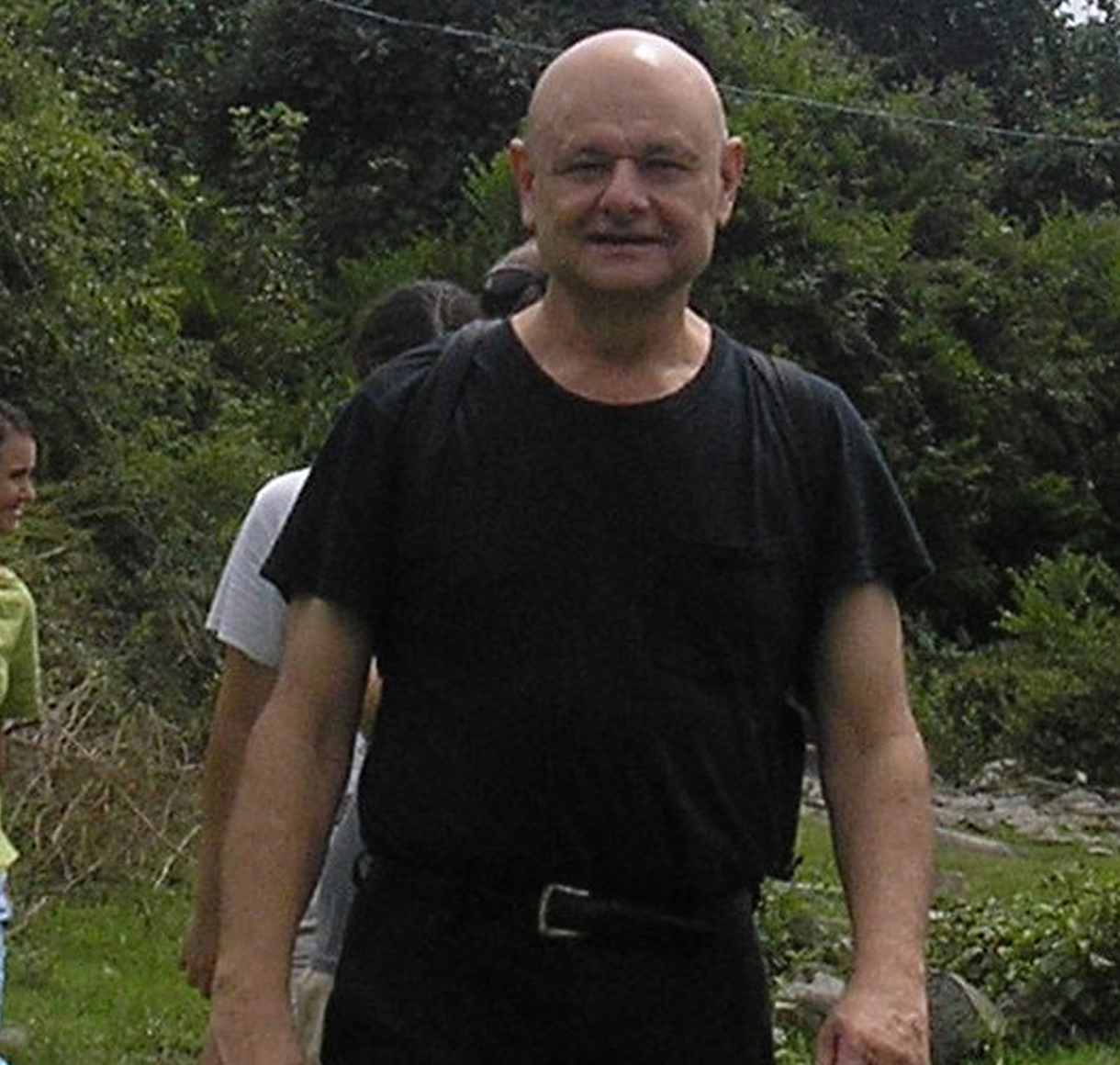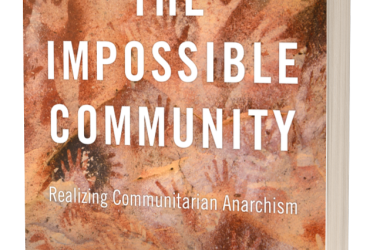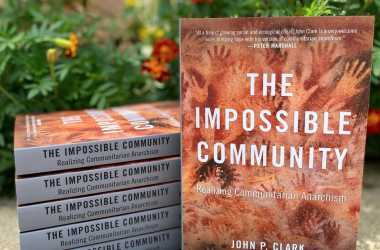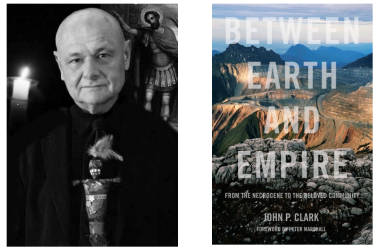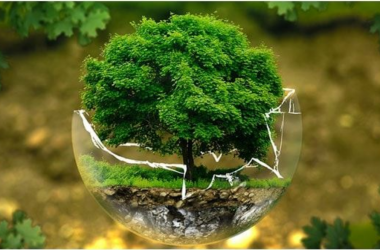By John P. Clark
These reflections were presented at the “Readings and Reflections” session of the Summer Solstice Gathering at La Terre Institute for Community and Ecology,” Bayou La Terre, Dedeaux, MS, June 24, 2017. (Below: Reflection Circle — photo by Laura Borealis)

A few days ago someone sent me a message about our Summer Solstice Gathering. It included a question: “Why does the Solstice have so much power?”
This is a really good question. I cringe slightly when I say that, because today every question, no matter how obvious, seems to be a really good question. If an actor is asked in an interview, “What’s your new movie about?” the actor inevitably replies, “That’s a really good question!” But this one really was a very good question. I strongly suspect that that the person who asked it probably knew the answer to it already, and possibly knows the answer much better than I do. Maybe this makes it an even better question. As I began struggling to answer it, it mutated into another underlying question: “What are you doing helping to organize a Solstice Gathering without putting a lot of thought into the question ‘Why does the Solstice have so much power?’” So, I began to think about this, and wrote a reply that I hoped might at least begin to answer the question.
The Solstice is about the power of nature, and focuses specifically on the power of the Sun, the major source of life on Earth, and on the relationship between this Great Source and all the changes and cycles of life on the planet. Primal peoples had a great feeling of awe for these powers. They produced many amazing and inspiring forms of symbolism, rite, ritual, and architecture related to it. Stonehenge is probably the most famous expression of this creative impulse. But there is also on this very continent on which we stand, a little over a thousand miles from here, a sacred site in New Mexico called Chaco Canyon. Long ago, the stones there were arranged so that a dagger of light focuses on a point on a spiral petroglyph in a highly symbolic way at the precise moment of each Solstice or Equinox. This and other constructions in the canyon were an extraordinary expression of awareness of the great powers, and great balance of powers, in the natural world. We have largely forgotten our connection to these forces and their dynamic balances, while thousands of years ago human beings were focused on the minute details of how they manifest themselves. As a result, they created, or discovered, sacred places where these connections were expressed most profoundly.
One of the greatest books. ever written about nature is called The Book of the Way and its Power or Daodejing. Our first weekend program at La Terre Institute was a study of this text. I think that this was a good beginning point for our voyage of discovery here, for perhaps nothing deserves deeper reflection than the meaning of power and powers. An important distinction concerning power is the difference between “power over” and “power to.” “Power over” is the dominating kind of power. It is the hierarchical or archic form that now rules over the world, devastates it, and drives it toward collapse. “Power to,” on the other hand, is the liberating kind of power, and concerns the unleashing of the abilities and energies of a being that are elements of the flourishing of that being. The Power of the Way relates to this kind of power and constitutes its larger context. To reflect on the Way is to reflect on the sources and Source of power. This is something we are reminded of when we reflect on the Solstices and Equinoxes, and, above all, the Summer Solstice. The Solstice reminds us that “our own power” and “our own powers” are not merely, and ultimately not really, “our own.” They are forms and manifestations of “power through.” They are ways in which we participate in greater powers that flow through all things, including ourselves.
What does this really mean? How are we to understand this, not as something vague and abstract that sounds good, but rather as something that is practically meaningful and compelling? I often look to Rumi for guidance in answering important questions, and even not so important ones (though even the not so important ones usually get important answers).
So, I opened Rumi. I selected a passage, hoping that “objective chance” would strike again. And I almost thought that Rumi had let me down this time. I had opened the book to the line:
If you throw dust at someone’s head.
This seemed like the craziest answer Rumi had ever given me. But sometimes a Rumi answer is only part of the answer. So, I read few more lines.
If you throw dust at someone’s head,
nothing will happen.
If you throw water, nothing.
But combine them into a lump.
Now, we were getting somewhere. As I should have known, Rumi never lets you down! So, I continued, and it got even better:
If you throw dust at someone’s head,
nothing will happen.
If you throw water, nothing.
But combine them into a lump.
That marriage of water and dirt cracks open the head,
and afterward there are other marriages.
If we assume that this passage is not a recipe for assault and battery it is quite illuminating. The first part of it reminds me of Wordsworth’s prescient judgment on the modern world: “We murder to dissect.” It was prescient, though not quite as prescient as that of Rumi in the Thirteen Century, or that of Laozi in the Fifth Century BCE. They all teach us that, increasingly, through human action, the elements of the world, and of everything in it, are torn apart and separated.
The Earth is separated from the Water.
The Water is separated from the Dust.
This is literally true. Billions of tons of rich Earth turn to dust each year and blow. It is literally true. Deserts continue to spread across the Earth. It is literally and metaphorically true. It becomes increasing difficult to (as Tristan Tzara phrased it) “cast anchor in rich earth.” Nihilism, in its most material and non-ideological form, spreads across the Earth. It is for this reason that we are being told today by the enemies of Nihilism, those who call themselves the Protectors of Water and Protectors of Earth, that “Water is Life.”
It has long been taught that the marriage of water and earth, and indeed, of all the basic elements, is the origin of life. Many Native American creation stories are about the establishment of a proper balance between Earth and Water. Islam also says that the Creator “molded clay, earth, sand, and water” into “a model” of a human being. And the Hebrew Bible says that in primordial times “a mist used to rise from the earth and water the whole surface of the ground,” and that the Creator then formed a Human from “dust from the ground” and “breathed into the nostrils” of this primordial Human “the breath of life” so that the Human could be “a living being.” In this story, as in many others, it is the union of water and earth, along with air, or breath, that opens up the human path of the Way and its Power.
The Solstice is about this Way of Nature, and all the Powers of Nature that are expressions of this Great Way. The Solstice teaches us about the Two Worlds in which we live. The World of Nature (Natura Naturans, Nature Naturing) is the world of constant change, the world of dynamic balance of opposing forces, the world of discordant harmonies, the world of chaotic order. It is a world in which Chaos is also a god, along with Cosmos. In such a World, everything happens. The other world, the World of Civilization, the dominant world (dis)order, is a world that not only “murders to dissect,” but also dissects to control and to dominate, to profit and to accumulate. In such a world, Nothing happens. Nothinging happens. Nihilism and annihilation happen. These two Worlds with their opposing ways are described in the Daodejing:
The Way of Heaven is to take from where there is excess and give to where there is deficiency
The Way of Man is to take from where there is deficiency to give to where there is excess. (Ch. 77)
The Way of “Heaven” or Wild Nature is a world of dialectical unity-in-difference, of All Our Relations, of connection and solidarity. “The Ten Thousand Things carry the Yin and embrace the Yang.” (Ch. 22) The great communitarian anarchist Gustav Landauer, a distant descendent of Laozi, described this Way as Geist, or Spirit, “a unity of separate things, concepts and persons.” From the beginning of Civilization, its project has been to destroy this unity-in-difference through the theory and practice of hierarchical dualism. Two and a half millennia ago, Laozi was already suggesting that we need to find our way back to the marriage, or remarriage, of what has been torn apart by the March of Civilization, the “Way of Man.” It is, above all, the Human Community and the Earth Community that have been torn apart.
It is this process of dissolution that we call the History of Civilization. It is a long history of decomposition. For a very long time, according to our sense of time, we have been condemned to suffer through this course of Civilization. This is the First Noble Truth. It is also what the historic Fall was all about, and what the mythical Fall symbolizes. The dominant institutions and the dominant ideology conspire to make the fallen state of Civilization identical with reality. History becomes a nightmare from which we try very hard not to awake. So, we need something that will crack our heads open. There must be “a crack in everything,” including heads, because, as we know, “that’s how the light gets in.” That’s how the light of the Sun gets in.
William Blake, another great Follower of the Way, wrote about marriages, unities-in-difference, that are unimaginable to those who are blinded by murderous, dissecting “single-vision,” as he called it, or “common sense,” as we call it—rather ironically, since it is precisely what filters out our awareness of the Common. Blake also wrote about what we become capable of seeing when our heads are cracked open. For example, we become capable of perceiving the Sun as the powerful expression of Spirit that it was clearly seen to be by so many primal peoples.
So, I would like to end with William Blake’s striking account of what it means to perceive the Sun, or, perhaps we should say, to see Another Sun beyond the shadow of the Sun that we have been taught to perceive:
I ASSERT, for myself, that I do not behold the outward creation, and that to me it is hindrance and not action. “What!” it will be questioned, “when the sun rises, do you not see a round disc of fire somewhat like a guinea?” Oh! no, no! I see an innumerable company of the heavenly host crying “Holy, holy, holy is the Lord God Almighty!” I question not my corporeal eye any more than I would question a window concerning a sight. I look through it, and not with it.
What Blake saw was perhaps “somewhat like” what the Ancients saw and celebrated at Chaco Canyon. It is perhaps something that we can glimpse as we celebrate the Solstice.

